In this guide, you’ll learn how to connect your Mailgun account to Snov.io using SMTP credentials and server settings.
Snov.io lets you connect your own business or personal mailbox and send email campaigns through your email provider’s servers to have total control over your sender account’s performance.
If you have an email account with Mailgun SMTP, you can take advantage of its emailing capabilities and connect it to Snov.io.
The process of connecting involves three primary steps:
1) Getting your Mailgun SMTP credentials
2) Configuring a new email account in Snov.io
3) Configuring optional settings
Before you start with connecting your Mailgun account to Snov.io, complete a domain verification to ensure the best deliverability.
1) Getting your Mailgun SMTP credentials
Start with creating SMTP credentials on the Domains overview page in your Mailgun account.
- Open Domains page
- Select the domain you want to connect to Snov.io
- Choose SMTP type
Mailgun will generate the SMTP credentials you’ll need to enter into the email settings in Snov.io.
Note: One domain can have multiple SMTP users in Mailgun. Please double-check your username and email password to make sure you’re using the correct credentials for the SMTP user you want to connect to.
Click Manage SMTP credentials to reset email password for a specific user or add a new user.
2) Adding a new email account in Snov.io
In the second step, you’ll need to enter your SMTP and IMAP settings on the email account configuration page.
- Go to the Email Accounts page.
This page lists all the email accounts that you’ve added before or will add to Snov.io.
Start adding a new email account by clicking the Add email account button.
- Choose Mailgun from the email service providers list.
The email account settings page will open.
Note: Please select an appropriate provider so we can suggest you default server settings during the setup.
 Entering SMTP settings
Entering SMTP settings
Snov.io connects to your provider’s SMTP server to send emails to your recipients.
In the SMTP section, enter your SMTP credentials and the provider’s server settings for sending emails.
Refer to the explainer table below for guidance on the information you need to enter in each mandatory * field.
SMTP credentials:
| Field | Explainer |
| (1) From name | This is your sender name.
Enter your name or company name to be displayed in the ‘From’ field when your recipients receive your email. |
| (2) From email | Enter the “Username” or “Login” from your Mailgun SMTP credentials.
When your recipients receive your email, this email address will be displayed in the ‘From’ field. Enable the “Use different account name” box if the SMTP username is different from the ‘From’ email. |
| (3) Email password | This is the password to the email account that you want to use as a sender.
Enter the “password” from the SMTP credentials created in Mailgun. |
SMTP server settings:
| Field | Default provider’s value | Explainer |
| (4) Host | smtp.mailgun.org | Select a default SMTP host from a dropdown menu.
If your domain is in the EU region, select smtp.eu.mailgun.org host. |
| (5) Port | 465 for SSL encryption
587 for TLS encryption |
Select an SMTP port from a dropdown menu.
Mailgun works with both suggested ports. |
 Entering IMAP settings
Entering IMAP settings
The IMAP server is responsible for tracking incoming responses and letting Snov.io to log them into the email campaign statistics.
For example, you can use default IMAP server settings from Google or Office 365 accounts.
IMAP credentials:
| Field | Explainer |
| (1) Username | Enter your Gmail email address. |
| (2) Password | Enter your “app password” for this Gmail account. Read how to create it. |
IMAP server settings:
| Field | Default provider’s value |
| (3) Host | imap.gmail.com |
| (4) Port | 587 for SSL encryption |
Attention: Adding IMAP settings is optional, but if you don’t add them, your email account will be connected conditionally.
As a result, Snov.io will not be able to track responses to emails sent from this email account and reply statistics may be inaccurate.
Read more about conditional connection here ⇒
 Send a test email to check connection
Send a test email to check connection
Complete your email account setup by testing the connection after entering all required settings.
- click the Check connection button
Snov.io will send you the test email with the subject “Testing your new email with Snov.io” confirming the successful connection.
3) Optional settings
The following settings are optional and can be skipped for a quicker setup. Configuring them will allow you more control over your account’s performance.
 Daily sending limits (1)
Daily sending limits (1)
| Setting | Explainer |
| Messages per day | Set a daily sending goal for this email account.
The number should be lower or equal to the provider’s daily limit. Snov.io will stop sending emails for the day after reaching this goal. |
| Delay between emails | Сhoose the interval (fixed or random) in seconds between every email message in your campaigns.
Increasing the time gap between your emails can make your email campaigns appear safer to the ESP. |
 Add your email signature (2)
Add your email signature (2)
Add a signature that will be attached at the end of all emails sent from this email account.
 Set up a custom tracking domain (3)
Set up a custom tracking domain (3)
With a custom tracking domain, you can expect up to 20% improvement in deliverability of this sender account.
 Warm-up your email account (4)
Warm-up your email account (4)
Start warming up your email account to raise your sender reputation and improve deliverability.
Add your mailbox for a warm-up ⇒
 Add a BCC email address (5)
Add a BCC email address (5)
Add your CRM email to forward all emails sent via this email account to your mailbox in the CRM.
After configuring the desired optional settings, click the Add account button to save it.
Read next:
 Launch your email campaign
Launch your email campaign
After connecting your Mailgun email account to Snov.io, you can select it as a sender for your email campaign.
Have more questions? We’re here to help at help@snov.io or live-support chat.
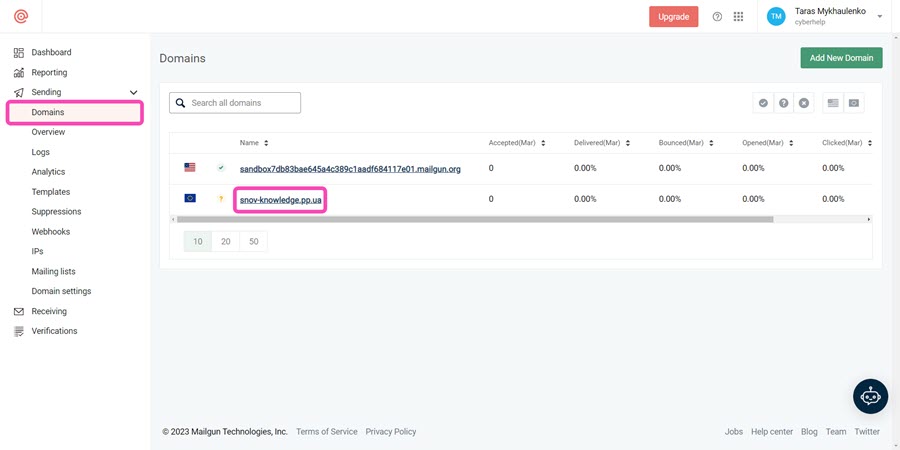
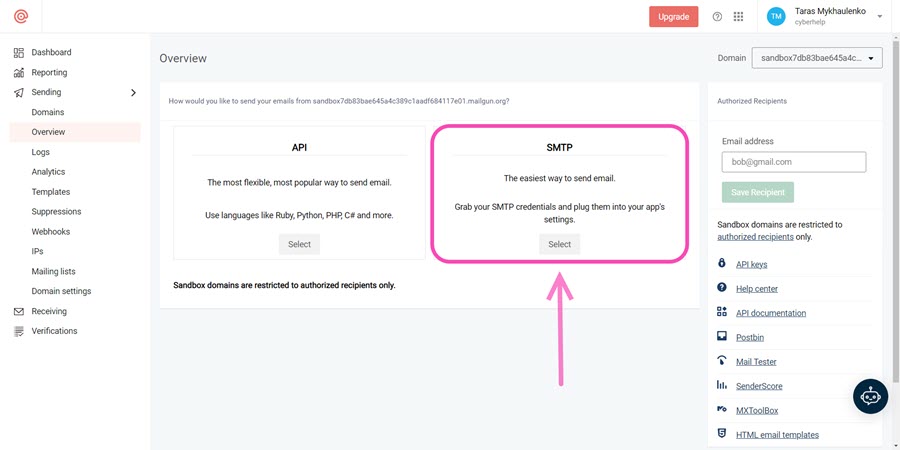
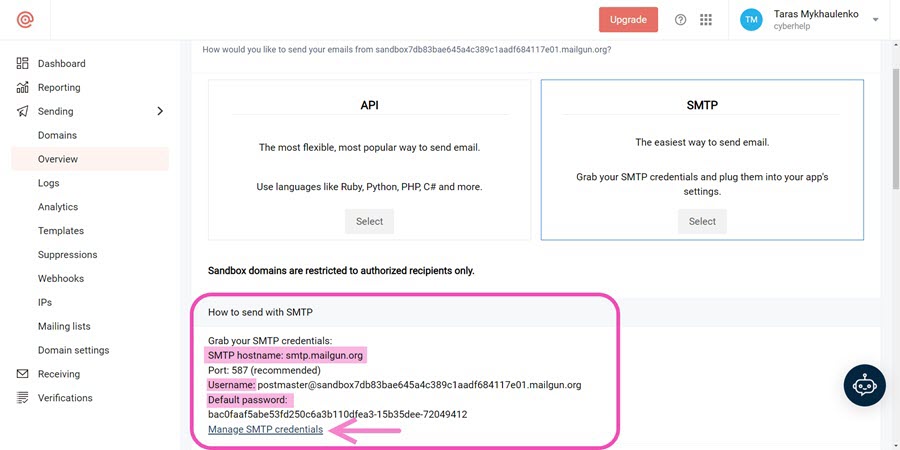
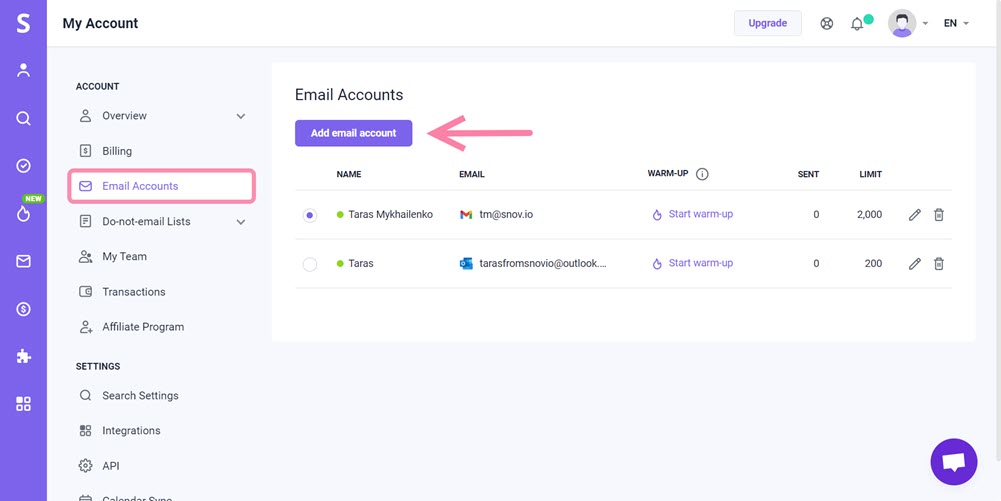
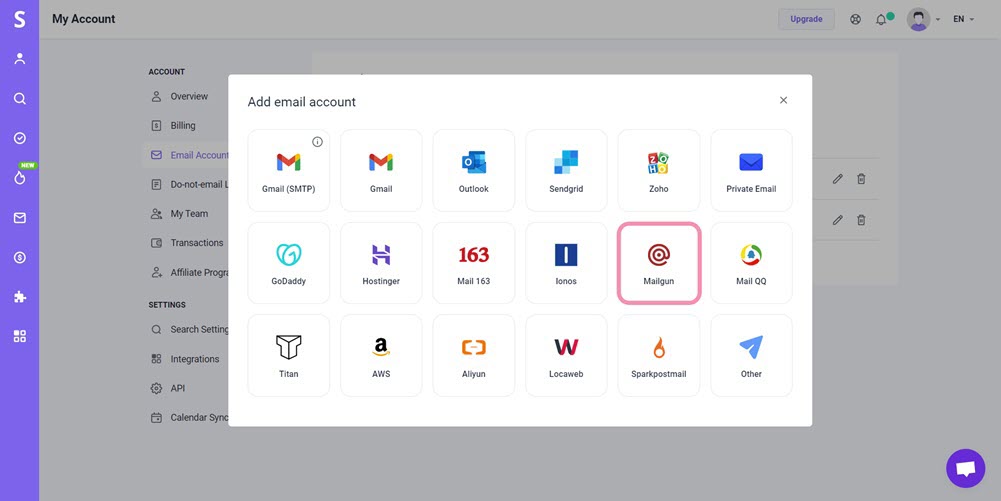
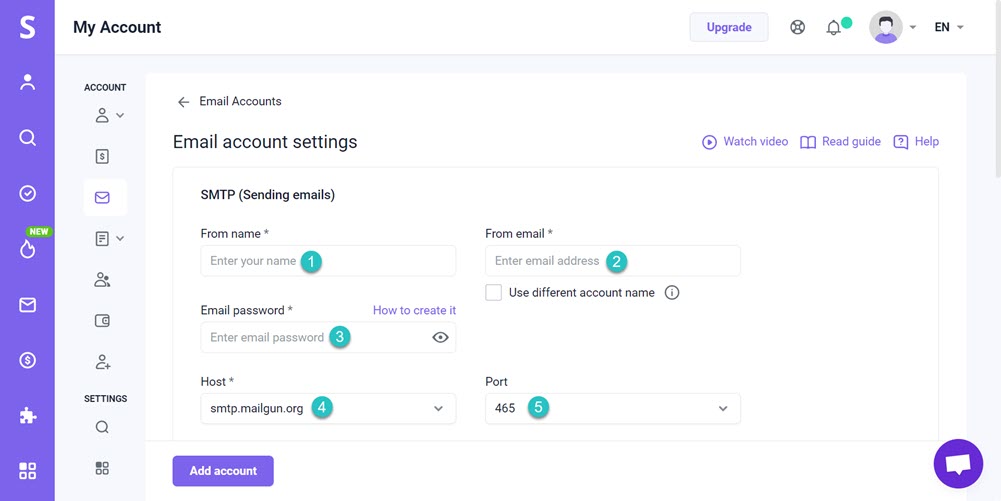
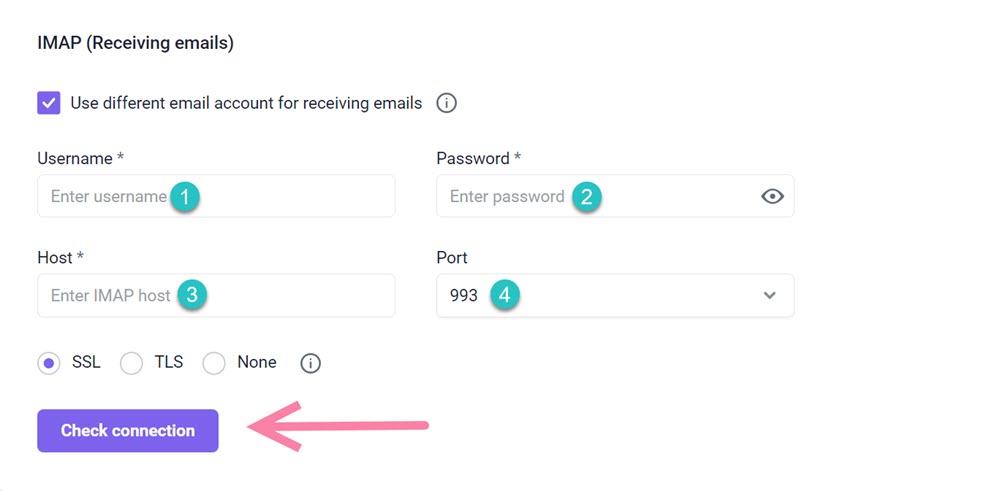
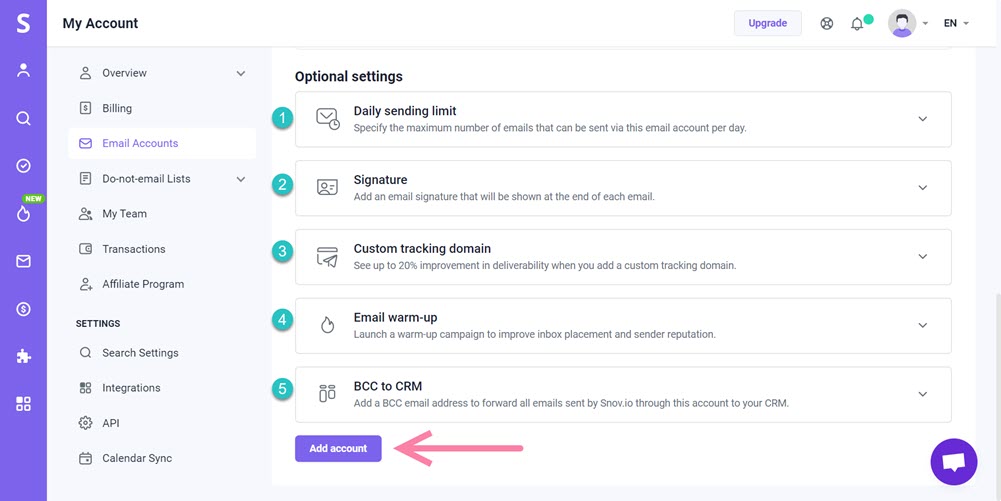

Sorry about that 😢
How can we improve it?